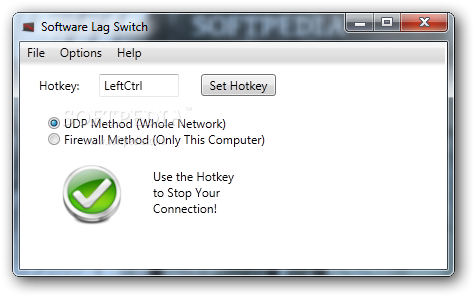

Aggregation at layer 3 ( network layer) in the OSI model can use round-robin scheduling, hash values computed from fields in the packet header, or a combination of these two methods. Ethernet frame in LANs or multi-link PPP in WANs, Ethernet MAC address) aggregation typically occurs across switch ports, which can be either physical ports or virtual ones managed by an operating system. IEEE 802.11) network devices that combine multiple frequency bands. Examples of aggregation at layer 1 ( physical layer) include power line (e.g. Network architects can implement aggregation at any of the lowest three layers of the OSI model. Combining multiple physical connections into one logical connection using link aggregation provides more resilient communications.


Multiple logical connections can be made, but many of the higher level protocols were not designed to fail over completely seamlessly. There are three single points of failure inherent to a typical port-cable-port connection, in either a computer-to-switch or a switch-to-switch configuration: the cable itself or either of the ports the cable is plugged into can fail. Most of these early solutions required manual configuration and identical equipment on both sides of the connection. An alternative solution, introduced by many of the network manufacturers in the early 1990s, is to use link aggregation to combine two physical Ethernet links into one logical link. If one started to bump into bandwidth ceilings, then the only option was to move to the next generation, which could be cost prohibitive. Ethernet bandwidths historically have increased tenfold each generation: 10 megabit/s, 100 Mbit/s, 1000 Mbit/s, 10,000 Mbit/s. Link aggregation increases the bandwidth and resilience of Ethernet connections.īandwidth requirements do not scale linearly. Implementation may follow vendor-independent standards such as Link Aggregation Control Protocol (LACP) for Ethernet, defined in IEEE 802.1AX or the previous IEEE 802.3ad, but also proprietary protocols. Other umbrella terms used to describe the concept include trunking, bundling, bonding, channeling or teaming. A link aggregation group ( LAG) is the combined collection of physical ports. Link aggregation increases total throughput beyond what a single connection could sustain, and provides redundancy where all but one of the physical links may fail without losing connectivity. In computer networking, link aggregation is the combining ( aggregating) of multiple network connections in parallel by any of several methods. Link Aggregation between a switch and a server


 0 kommentar(er)
0 kommentar(er)
